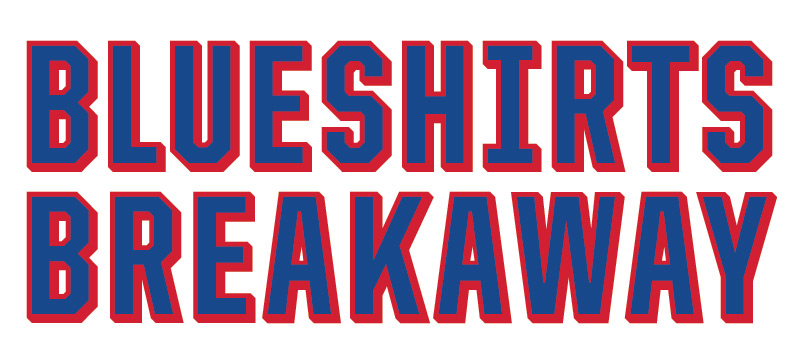As I’m scanning across my various social media accounts I come across something that causes me to literally stop, rub my eyes, and check again to make sure what I just read was in fact there. Yep, sure enough it was…. a slew of people were complaining that Kevin Shattenkirk had a terrible opening game, and referencing the fact that he registered a “-2” in the mind-numbingly dumb “plus/minus rating” statistic as the basis for this erroneous proclamation.
The irony is not lost on me that the majority of people that reference plus/minus ratings are the same people that yell things like, “stats are for nerds, watch the game!” Irony aside, I get why people reference it so often; for whatever reason most outlets that provide box score summaries of NHL games will list plus/minus alongside the important counting statistics that everyone knows like goals, assists, points and ice time.
I’m here to tell you to STOP USING PLUS/MINUS RATINGS FOR PLAYER ANALYSIS!
Plus/minus quite literally might be dumbest, most poorly constructed stat in all of hockey statistics, and anyone who read my Chris Kreider article will know that there are A LOT of statistics out there. However, anyone that read my piece will also know that despite listing off nearly 100 different statistics within the data tables and paragraphs, I never once referenced plus/minus, and there is a reason for that.
I know I’m not stating anything groundbreaking here; Googling the topic of NHL player plus/minus will yield a bunch of results featuring hockey writers and analysts much more accomplished than myself discussing why it is a terrible stat. That said, a few of our wonderful Patreon subscribers asked me to explain why I was getting so pissed off at all the people on social media using it as ammo against Shattenkirk’s performance in the season opener, so here we are.
Anyone who watched the game probably noticed just how much smoother and efficient the power play looked, and how often the team possessed the puck in the offensive zone when him and McDonagh were out there. Also, that assist to Zibanejad on that first goal was truly a thing of beauty. Yes, he could’ve done a much better job on that first Avalanche goal; Duchene got to that rebound way too easily despite Shattenkirk being in the vicinity. But other then that, Shattenkirk appeared to have a very strong outing, and the advanced stats back that up. I won’t hammer you over the head with all of his advanced numbers, but most notably, he posted a 67% CF%, meaning the Rangers registered two shot attempts for every one attempt from the opponent while he was on the ice.
If Shattenkirk had such a good night, how the hell did he end up with a -2 plus/minus? Simple, because of the way the flawed stat is calculated. Plus/minus awards players a “plus” when they are on the ice when their team scores a goal on the penalty kill or at even strength, including when a goalie is pulled. Conversely, a “minus” is attributed to a player on the ice when their team allows a goal at even strength or a shorthanded goal. Herein lies the problem; it somewhat randomly decides which goals are worthy of attributing a plus or a minus. According to plus/minus rating, being on the ice for an opponent’s goal when your goalie is pulled is deemed worthy enough to earn you a minus, but being on the ice when the opponent scores a power play goal, despite you actually having a goalie in the net, does not.
On the flip side, if your team scores an empty net goal while you are on the ice, you earn a plus, but if you are on the ice for a power play goal, you do not. This skews the stat to unfairly help penalty killers, many of which are also not on the ice with their own goalie pulled and the team is pressing to tie up the game. It also unfairly hurts players that log a lot of power play time, whom similarly are likely to be on the ice with their own goalie pulled. In other words, players like Kevin Shattenkirk often wind up with a worse plus/minus rating then they truly deserve.
In the opener, Shattenkirk was on the ice for the first goal Colorado scored, which came at even strength, giving him a -1. Shattenkirk, as the quarterback of the team’s top power play unit, was also on the ice for both goals the team scored; however, since both came on the power play, his plus/minus rating remained unchanged at -1. Finally, he was on the ice at the end of the game, when the Rangers pulled Lundqvist and Colorado scored the final goal, bumping his rating down to a -2. So, despite being on the ice for both of the Ranger goals, and two of the Avalanche goals, one of which came with the net empty, he registered a -2 plus/minus rating. And that my friends, is a grade A example of why player plus/minus rating is perhaps the worst statistic in all of hockey. So please, do us all a favor, and stop using player plus/minus ratings already.
Author: Drew Way
Diehard New York Rangers fan since 1988! Always has been fascinated by sports statistics, and is a big proponent of supplementing analytics with the eye test. Also a big Yankees, Giants and Knicks fan.

